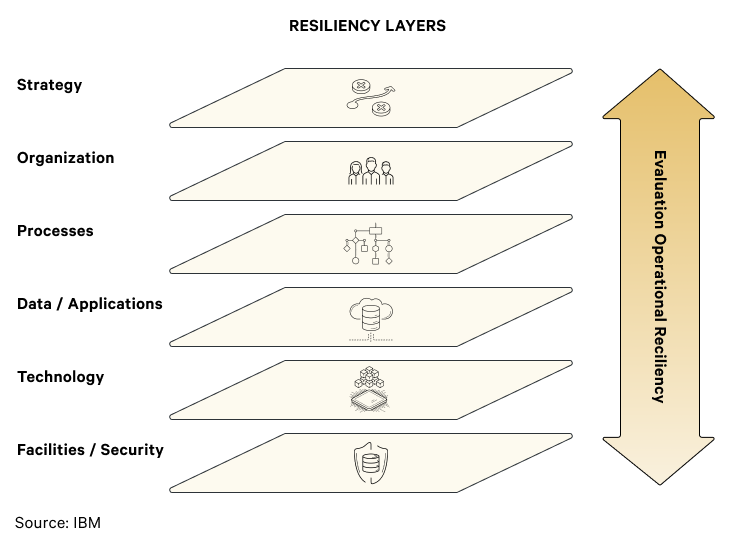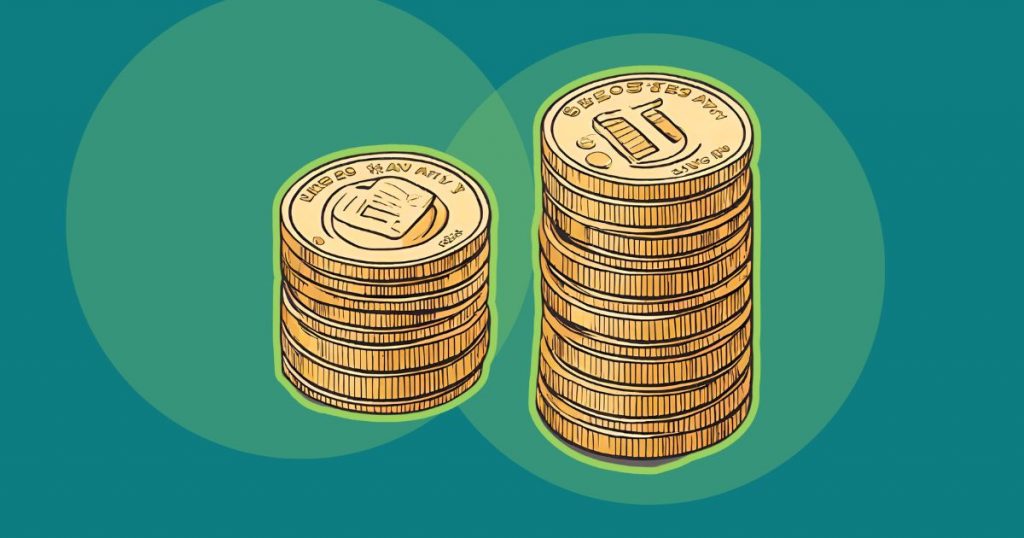Experience Strategy Will Become a Cornerstone of Resilient Brands
Why a focus on employee experiences should be part of your strategic pivot.
Jonah Burlingame is a design strategist, contemporary abstract artist, and Long Dash alum.
If you feel as though your business strategy shifted overnight, you’re not alone.
This is a truly sobering moment. A plethora of business articles for the better part of the past decade have been coaching brand leaders to develop a risk-taking mindset required for disruption and innovation. Now, from this long-held growth mindset, leaders find themselves quickly shifting to survival mode and becoming risk averse.
What we are facing is no typical recession. Sudden drops in the supply and demand of products and services, a disrupted workforce, and uncertainties in consumer behavior put leadership in uncharted waters.
There is no playbook for this moment. The future landscape is likely to look very different than it did yesterday with radical shifts in consumer expectations, as well as how and where we work.
These shifts will have implications to the future of business. Brands will need to be adaptive and resilient if they are to transition successfully to whatever new reality the future holds. The brands that emerge as leaders will be the ones who invest in this resilience and focus on their employee experience—otherwise thought of as “internal user experience.”
So where to begin? In a textbook economic downturn or other adverse event, the business instinct is to retrench and protect the profits gained from a prior period of growth. But let’s consider another angle—one in which leadership uses these current forces to shape a longer term strategy. Scenario planning is an activity forward-thinking businesses do on an annual basis to consider various external factors which may impact the business. By considering various events in advance, they build strategic agility, or the ability to make decisions faster because they’ve already considered the response to a particular scenario. A black swan event is sometimes introduced during scenario planning to test responses to sudden disruptive events. A pandemic is one such black swan event which until recently would have been perceived as unrealistic.
The textbook approach would have brands cut costs and take cover only to resume business as usual once the event was over. The other approach sees an opportunity to improve a business’ ability to adapt to change and come out stronger on the other side. This is business resilience, or in other words, the capacity for an organization to anticipate, protect, respond, and recover in the face of a disruptive force. This approach may prove to be a critical competitive differentiator for brands as the economy improves.
One such target for a resilience plan is an organization’s value chain—the functional activities that add value for customers, such as marketing, design, delivery, and customer support. Value chains across almost every industry are currently being threatened by disruption to the workforce as they work remotely with limited tools and capacity to do their jobs.
Borrowing from IBM’s resiliency business layer framework, we’ll explore how various experience strategies strengthen value chains.

What is an experience strategy?
Experience strategy is more than just a sophisticated way of saying user experience (UX). Whereas UX design is a rigorous process focused narrowly on the customer experience with digital products, an experience strategy takes a holistic approach to consider the entirety of the value chain. This encompasses external audiences, internal employees, technology, systems, processes, organizational structure, business models, and UX design to deliver higher value to customers and the business at scale—and more efficiently. Experience strategists seek to create a virtuous circle between customer needs, business viability, and technical feasibility. Referencing the image above, it considers the top five layers of business.
While a number of organizations fail to consider their internal employees as a key part of this ecosystem, top performing organizations see the connection between customer satisfaction and employee satisfaction. According to McKinsey & Company, those focusing inwards tend to empower employees to deliver a better customer experience and are also better able to attract and retain talent. A focus on employee journeys can reduce the cost to serve customers by 15-20 percent.
I have identified three experience strategies that can help brands improve their resilience as we emerge from the COVID-19 crisis: The use of Customer Experience (CX) intelligence, workflow optimization, and organizational learning.
1) Customer Experience Intelligence
Business intelligence systems are critical to providing knowledge and insight for leaders to make decisions quickly and confidently. CX intelligence is a specific form of business intelligence that empowers leaders of marketing and product development to monitor customer satisfaction. It offers implicit indicators, such as user behaviors tracked in digital experiences, as well as explicit indicators, such as contact center data, social sentiment, and surveys. This insight arms leaders with a holistic picture of how customers experience their brand and guides decision-making. An investment in CX intelligence strengthens resilience through improved anticipation of customer needs, responsiveness to change, and recoverability in the event of disruption.
One multinational bank took its CX intelligence platform a step further to conceive of a customer listening platform that monitors the completion of key flows of their digital banking experiences, such as setting up a money transfer. If a task results in an error or if there is a pattern of abandonment in any part of the flow, the issue is routed automatically to the respective development teams. Within the context of today’s disrupted workforce, having such a close connection to how customer behaviors are shifting enables a quick customer support response, mitigates the loss of revenue, and ultimately keeps the brand-customer relationship strong.
2) Workflow Optimization
Purposeful, considered workflows improve an organization’s capacity to respond to and recover from disruptive events and can significantly impact a brand’s value chain. This is partly because workflows touch so many layers of the business. A leader reimagining workflow must consider organizational structure, reimagine processes, integrate data and applications, and adopt new technologies (layers two to five). Ultimately, the goal is for a streamlined workflow to have an employee-centered approach that brings together systems, processes, and tools to support the delivery of products and services.
Leaders should focus on understanding employee needs when they are optimizing workflows. This approach results in resilient, purpose-built workflows that make employees more effective, rather than ad hoc workflows cobbled together from disparate systems, processes and tools. Specifically, purpose-built workflows remove friction and points of failure, and make it easier to onboard new employees.
One such financial data company is investing to optimize the back-office workflow experience for its workers. The company sought to streamline its workflow for publishing data to its customers. To do this, the company is consolidating a number of content management systems, reevaluating its processes, and creating custom interfaces in service of employee-centered workflows. The solution unifies the management of disparate data sets into a single system with a consistent interface, simplifying the process, time and effort to deliver critical data feeds to its customers.
3) Organizational Learning
The ability for an organization to share knowledge at scale increases its agility to respond to an uncertain future. Brands that have “learned how to learn” can more quickly adapt to whatever the business landscape looks like on the other side of this crisis. A quote from a former executive at Shell Oil Company illustrates this well: “The ability to learn faster than your competitors may be the only sustainable competitive advantage.”
One business division at a large tech company sought to embrace this mantra by redefining how the company’s sales force was trained. Instead of merely being the creator of the company’s sales training curriculum, the unit repositioned itself as a strategic enabler of business outcomes. The unit leveraged solutions that were not limited only to learning curriculums, but addressed the whole of adult learning. It supplemented its formal learning curriculum with informal modes, such as employee-sourced materials and started to facilitate connections between novices and experts. A holistic approach like this one requires brands to consider multiple layers of the business: strategy, organizational structure, processes, technology, and culture. It removes friction from the transfer of knowledge and accelerates learning throughout the organization.
What will the future of your business look like?
There are three ways to deal with the future: You can try to predict it with incredible accuracy and place all bets on that outcome; you can deny that any change is going to occur and proceed business as usual; or you can develop a plan for resilience.
Isolation is a good time for introspection. Yet, rather than try to predict what your future landscape will look like, consider the following questions to find opportunities to harden your business resilience strategy:
- What are the critical activities in your value chain?
- Where is the weakest link in your back office workflows that can impact your delivery of customer experiences
- How can you improve visibility into your customers’ new expectations and respond to their needs?
- Will you be positioned to efficiently and effectively train new talent once hiring resumes?
- How might your organization position its operations to recover faster than your competitors?
After a moment of introspection to ponder these questions, ask yourself which brands you would bet on to emerge as the most resilient on the other side of this event. My bet is on those who view this crisis as an impetus to chart their own course, emerging transformed by their own initiative, rather than by the unpredictable winds of change.



